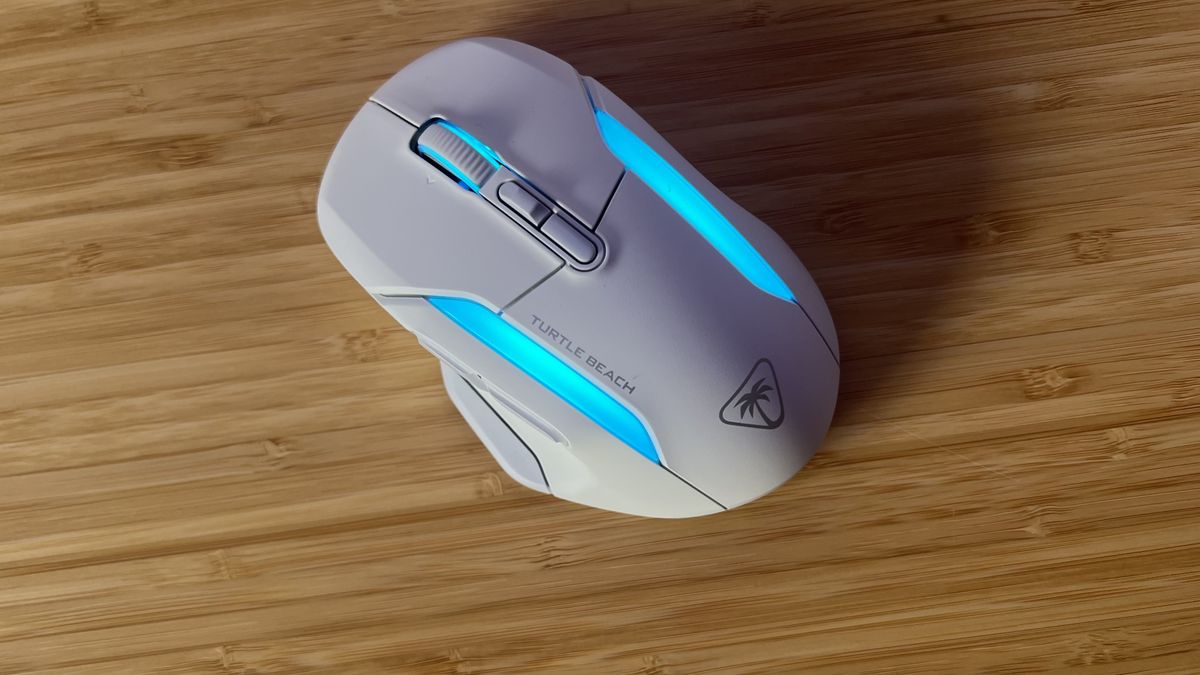12DOVE Verdict
The Turtle Beach Kone II Air revives the wide, flat base with a fantastic new sensor, excellent connectivity options, and an improved aesthetic. While it’s a little too heavy to be as versatile as its competition, this is a dream for those with larger hands.
Pros
- +
Incredibly comfortable base
- +
Extra programmability
- +
Well-tuned weight and chassis
- +
Speedy sensor
- +
Bright RGB lighting
- +
Great battery life
Cons
- -
Heavier than the competition
- -
Not suited to faster games
Why you can trust 12DOVE
Before Turtle Beach dissolved the Roccat brand, the original Kone Air attempted to pair a modest price tag with a wireless connection. While it got the job done, it made too many sacrifices to truly be considered one of the best gaming mouse models on the market. The new generation is here, though, and I couldn’t be happier. The Turtle Beach Kone II Air does up the price tag, to around double that of the original, but boosts the sensor significantly and adds a rechargeable battery - all in a much slicker feeling chassis.
I’ve spent the last two weeks testing the wireless Air model, though there’s also a cheaper $69.99 / £59.99 wired model that shares the same functionality and design. It’s a premium pointer considering its wider base, but in a market led by the super light, it’s certainly got a lot to say.
| Price | $119.99 / £119.99 |
| Connection | 2.4GHz / Bluetooth / Wired |
| Shape | Right-handed |
| Buttons | 9 |
| DPI | 26,000 |
| IPS | 650 |
| Switches | Titan Switch Optical |
| Weight | 110g |
Design
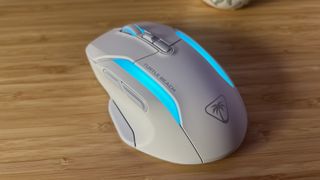
The Kone’s form factor is never going to be svelte - this is a wide-set mouse for those with larger hands or who prefer a more relaxed palm grip. At its widest point, the Kone II Air measures in at 8.3cm, a considerable increase compared to the Razer Basilisk V3’s 7.5cm and the Corsair Darkstar Wireless’s 6.7cm. This is a wide, flat base with only a very slight hump in the middle - a design that’s stuck around since the early days of the range, but one that provides a particularly comfortable hold. While that form factor made the original model appear cheaper, the Kone II manages to get away with it, thanks to the addition of three vibrant RGB patches. These are dual-zone programmable, and provide a nicely crisp illumination across both sides of the mouse and underneath the scroll wheel. On my white model, a clean cyan shines through particularly well, though there are a range of effects to choose from.
The matte surface texture also helps the Kone II Air feel far more premium than the original. While some may miss the rubberized sides (grip tape is still provided in the box), I much prefer the soft touch plastic coating on the 2024 model. While mice with this material sometimes run the risk of feeling slippery, I was never worried about losing my grip. That’s because this is still a well sculpted chassis. The grooves on each side help gently guide the hand into the correct position, without every feeling tense or unnatural during gameplay. On the left, just above the thumb rest, a particularly deep recess provides both stability and comfort - I was easily able to hook my thumb around the back of this groove for extra precision when pulling down on the mouse, for example.
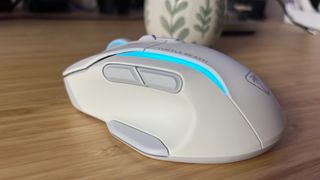
Of course, a wider base is always going to have an impact on the weight and the Roccat Kone II Air doesn’t shy away from its heavier 110g form factor. That’s not as bulky as the original model’s 119g, but it is noticeably chunkier than the 89g Corsair M75 Wireless and the 74g SteelSeries Aerox 5 wireless, both wider-set mice. In practice, that extra weight does mean that the Turtle Beach Kone II Air is less versatile than its direct competition. The Corsair Darkstar Wireless, for example, is my go-to MMO mouse at the moment, but still manages to pack a 96g form factor that brings FPS games within far closer reach. The silhouette and weight of the Kone simply aren’t conducive to these faster paced games, though it does have its place on the battlefield.
The extra weight provides a reassuring presence on the desktop. Games with the space to allow for more considered movements absolutely benefit from the additional level of control and precision that comes with a heavier pointer. Those with larger hands are going to get more out of this than someone with smaller hands like me (I did sometimes struggle to fully manoeuvre my way around the device during a few shootouts).
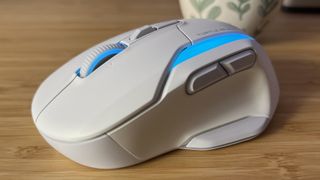
The actual aesthetic is a strange one. The crisp angular lines running across the main body of the Kone II give it a distinct ‘gamer’ vibe, but this is then undercut by the soft rounded corners of the device as a whole. I would even go so far as to call the front area stubby, it just looks like there should be a tiny bit more main click before the taper begins.
Features
While the original Roccat Kone Air prioritized its wireless connection via 2.4GHz and Bluetooth, the Turtle Beach Kone II Air adds wired connectivity as well. That means you can easily plug in to charge up (yes, you can charge now - no more replaceable batteries) or ensure you’re getting the lowest latencies possible. It has to be said, I never noticed a difference in speeds between the wired and 2.4GHz connection - though most wireless gaming mouse models are up to speed standards these days anyway.
Turtle Beach also states that that wireless connection (and the RGB lighting) can run off a battery that lasts up to 130 hours on 2.4GHz and 350 hours on Bluetooth. That’s high in the world of gaming mice - the Corsair Darkstar Wireless taps out at 80 hours with a smaller system of RGBs and the Razer Basilisk V3 Pro only manages 90 hours. I will spend an average of 7-10 hours using a mouse every day, and at the end of the week I was still at well over 50% charge by the time Monday came around again.
The wider base and heavier form factor might have given it away but the Turtle Beach Kone II Air hasn’t been designed for first person shooters - and that means we get a load more programmable controls onboard. That’s excellent news for anyone who regularly plays across larger adventure titles or MMO games, having more access to quick functions makes these types of experiences all the more intuitive especially when you can keep your right hand firmly on the mouse at all times. In the Kone’s case, three side buttons (two standard back and forward clickers and a thumb rest paddle underneath) make up the bulk of your customization. However, the scroll wheel can also easily be tipped to the side to make two more inputs, with a third coming from the press of the wheel.
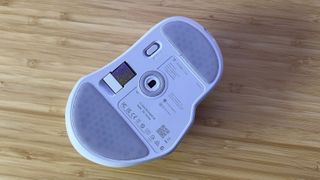
Underneath the scroll wheel, you’ll find a DPI shifter and scroll mode toggle as well. That makes up nine inputs in total, which can be transformed into 21 using the brand’s Easy Shift functionality. When switched on, holding left paddle with the thumb opens you up to another layer of functionality from the same buttons. Unlike in the original Kone, you’ve also got space for several presets as well - excellent for swapping between work and play, or between games.
These are among some of the best side buttons I’ve used on a gaming mouse, offering just the right amount of tension to remain satisfying without being heavy but still steering well clear of accidental presses. That even goes for the paddle sitting beneath the thumb - I’m able to comfortably rest on top of it, and giving it a quick nudge to actuate exactly when I want to. The larger shape means I’m not able to roll my thumb to reach the back side button quite as easily as I would on something smaller like the Razer Cobra Pro, but both clickers are still easily accessible.
All of those button assignments are sorted in the Roccat Swarm software. This is a no-frills experience that neatly avoids plastering ads all over your desktop and instead focuses on getting a wide range of customization options in front of you in an intuitive manner. All of your button assignments are quickly and easily set in here, but you’ll also be configuring your sensor’s DPI, polling rate, debounce, lift off distance, angle snapping, and motion sync, as well as setting your standby timing and viewing battery and update status. Everything is neatly laid out in one place without the need to dig through menus - as someone who uses a lot of these programs for a lot of different devices, not having to re-learn where everything is is a godsend.
Performance
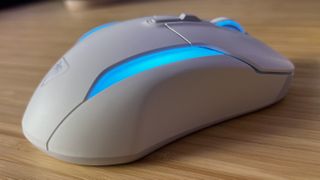
Of course, the Turtle Beach Kone II Air isn’t going to go toe-to-toe with the likes of the Razer Viper V3 Pro from a pure speed standpoint. However, its feature set means its geared more towards games that require more custom inputs. That doesn’t mean it’s not equipped to track fast, though.
The Turtle Beach Owl-Eye 26K sensor runs at 650 inches-per-second, making tracking feel effortlessly smooth across a wide range of genres. In a slimmer mouse, this sensor could easily take on more competitive endeavours from a pure specification standpoint. It’s snappy, responsive, and tracks pretty easily across a range of surfaces as well. Meanwhile, the brand’s optical Titan Switches have remained intact underneath each main click, offering a soft but still energetic response. With configurable debounces, repeat presses felt immediate.
They’re not quite as tactile as the Omron switches in the Corsair Darkstar Wireless, and they felt a little heavier than Razer’s own optical switches. In practice, this meant a little fatigue was creeping in after more frantic moments, when I would sometimes drop a press or two.
Should you buy the Turtle Beach Kone II Air?
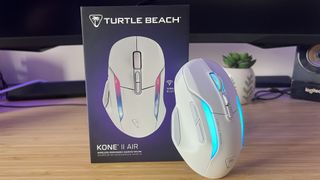
The Turtle Beach Kone II Air is perfect for a player with larger hands who wants plenty of controls at their finger tips. While I wouldn’t recommend it to those playing competitively due to its size and weight, anyone looking to put comfort first while still remaining relatively fast on the battlefield should be considering this device. It’s cheaper than a lot of its competition, and offers a form factor we don’t see too much of these days. Plus, it absolutely nails its ergonomic design and keeps a cool light show onboard for extra flair.
With the wireless model coming in so much more expensive than the wired alternative, I would be hesitant to pit it as the better buy of the two. If you don’t mind a tail on your rodent, the cheaper wired version offers excellent value for money.
From an MMO perspective, the Turtle Beach Kone II Air is just pipped by the slightly more expensive Corsair Darkstar Wireless. With more programmable inputs, a lighter form factor, and more tactile switches, Corsair’s slick pointer retains its crown in this matchup, though its $169.99 / £149.99 MSRP might run the wrong side of some budgets.
How I tested the Turtle Beach Kone II Air
I used the Turtle Beach Kone II Air for a period of three weeks, using the device for all daily work and play. I primarily tested across CS:2, Fallout 4, and Assassin’s Creed Odyssey during this process (though also dabbled in Planet Coaster and TCG Card Shop Simulator: The Prologue) as well. For more information on how we test gaming mice, check out the full 12DOVE Hardware Policy.
We’re also rounding up all the best Razer mouse models on the market, as well as the best Logitech gaming mice. Or, for a full setup refresh, check out the best gaming keyboards we’ve tested so far.

Managing Editor of Hardware at 12DOVE, I originally landed in hardware at our sister site TechRadar before moving over to GamesRadar. In between, I've written for Tom’s Guide, Wireframe, The Indie Game Website and That Video Game Blog, covering everything from the PS5 launch to the Apple Pencil. Now, i'm focused on Nintendo Switch, gaming laptops (and the keyboards, headsets and mice that come with them), PS5, and trying to find the perfect projector.
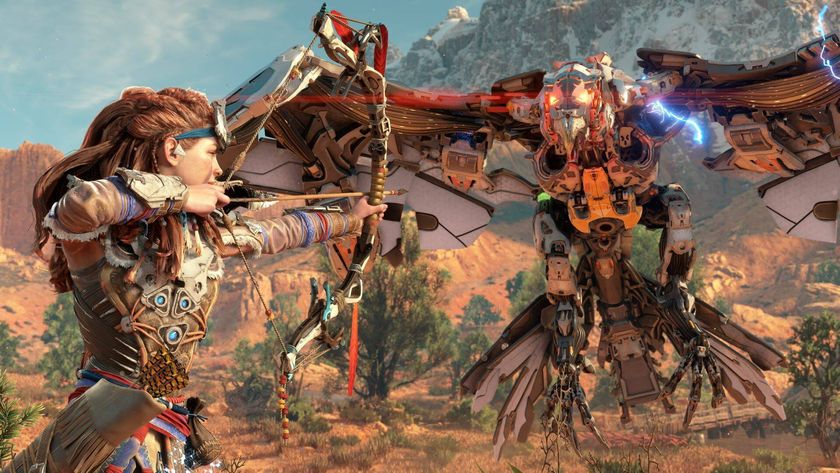
PlayStation needs to "reconsider" its push for "cutting-edge graphics" and "change our way of thinking" says former Sony boss
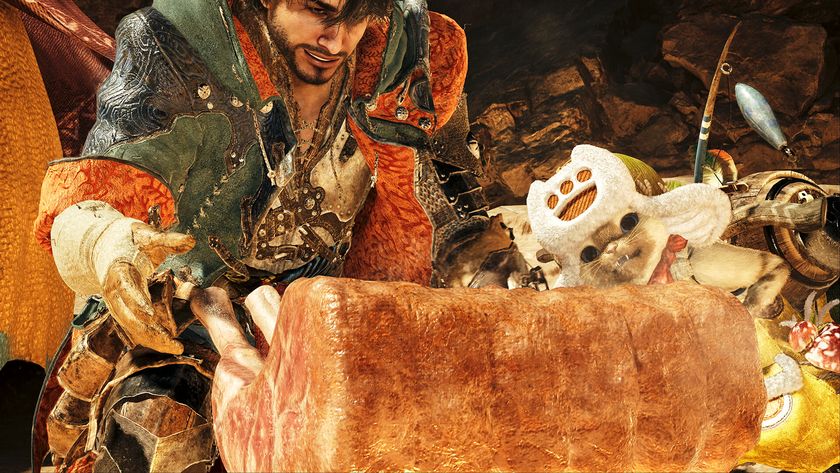
To celebrate 10 million sales, Capcom has released a special pack of Monster Hunter Wilds items, including upgrade materials and eggs
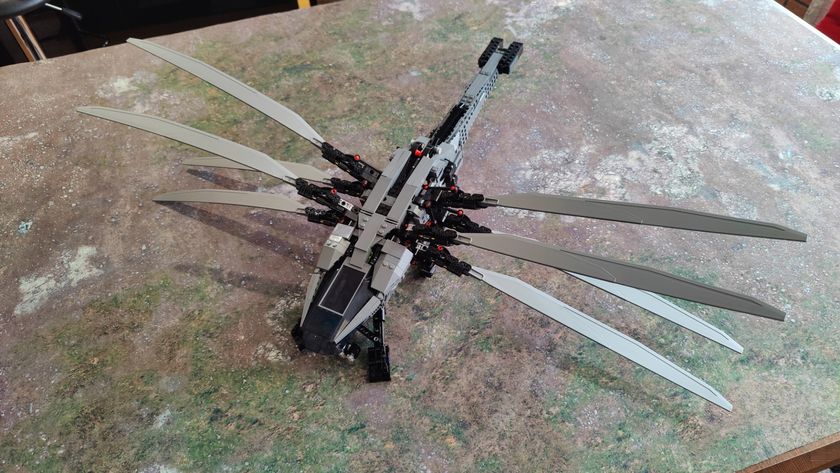
Long-boi Baron Harkonnen's minifig is too big for the Lego Dune Royal Ornithopter cockpit, but he won't weigh down your wallet
